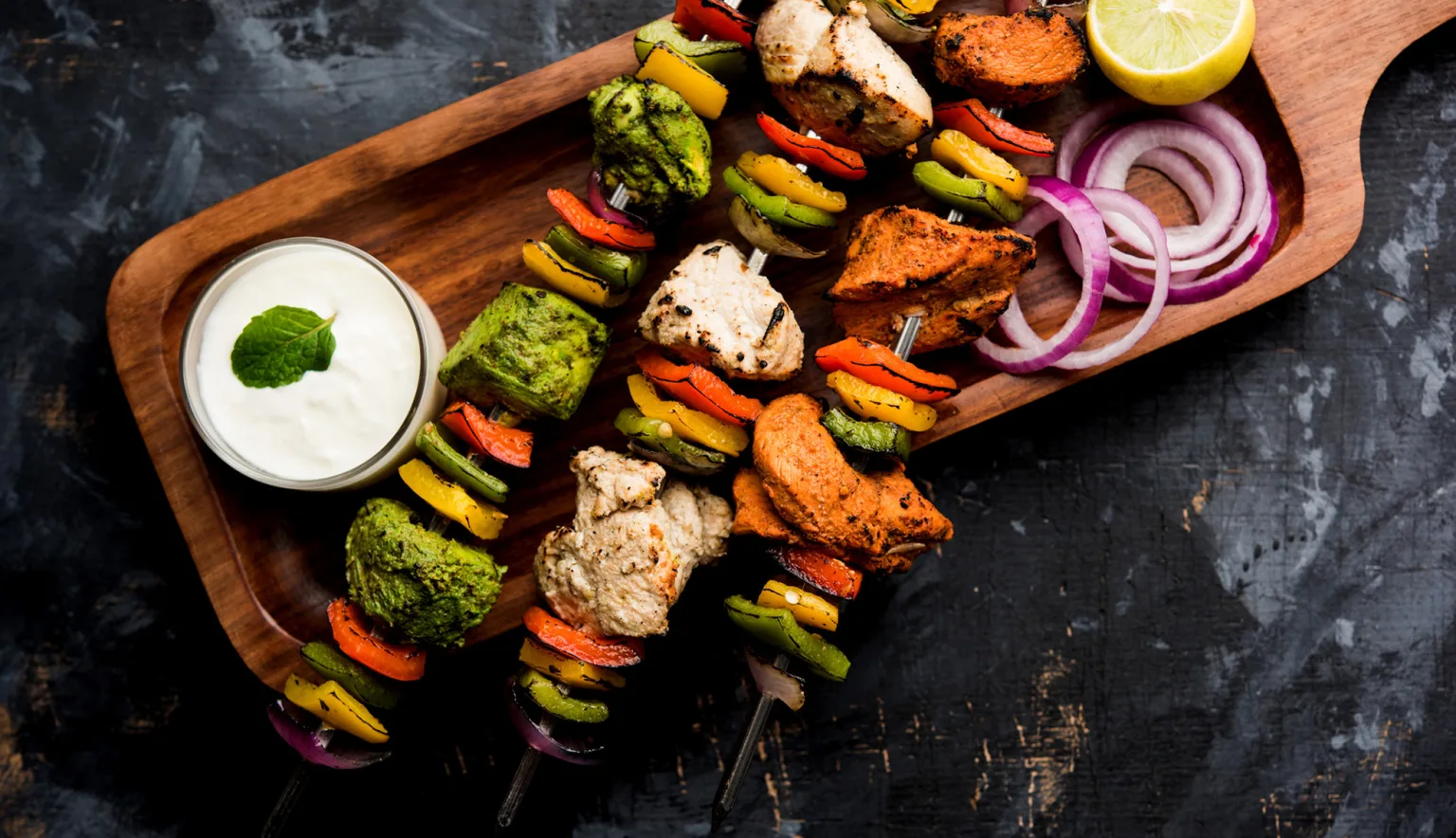In this edition of The Tiffin Box, we talk chicken tikka, spice, and expanding palettes in the city of Bangalore, South India.
A few years ago, as we headed home from a trip to Lesvos, my Indian partner was stopped at immigration. He was told his visa was only valid for academic purposes, not travel. As we took the bus to the car park in the pouring rain, he told me it was time for him to go home.
Four weeks later we touched down in Bangalore, south India.
Bangalore is a sprawling megacity of 12 million. Construction sites sprouted everywhere like mushrooms, and the air rang with the shrill whine of drills and stonecutters. On the first day, we went for a walk to stretch our legs. At the end of the street was a main road – no lanes, just hundreds of rickshaws, buses, two-wheelers and cars forcing their way into every available inch of space. It took me months to cross that road alone.
Bikram tried to combat my misery in the best way possible – by introducing me to different foods. He picked up some chicken tikka from Bangalore Club. It’s one of many colonial clubs across India – spacious, pastel-hued buildings where the British could drink tea and whisky, away from the hubbub of the city. These days, the clientele consists mainly of middle-class Indians. Bangalore Club has a couple of claims to fame. One is that Winston Churchill visited and never paid his bill, which is framed on the wall. Another is that they do pretty good kebabs.
I looked down at the foil container. Inside were pieces of chicken thighs stained lurid orange, charcoaled at the edges. They were accompanied by a small Styrofoam pot of smooth green chutney and some diced raw onions.
‘They look spicy,’ I said.
‘Trust me – they’re fine,’ Bikram replied.
Famous last words. I picked one up and bit into succulent, smoky meat accompanied by a hefty kick of chili.
Kebabs are a popular starter in India. Like me, they arrived in the country from somewhere else. First introduced to India by Afghan migrants, they were refined by the Mughal Emperors, who ruled India between the 16th and 18th centuries and favoured softer, more extravagantly spiced meats. They cooked kebabs in tandoors – clay ovens heated by a charcoal fire – a method still used in India today. However, kebabs first originated in Turkey, when soldiers skewered meat on swords and roasted it over an open fire.
You could say that kebabs are a warrior’s food. But as I tucked into the chicken tikka, I couldn’t have felt any less like a warrior. My mouth burned; my nose ran. Draining my glass of water didn’t help. My eyes began watering. And then these turned into real tears; frustration that I couldn’t do something as basic as cross a road, that my spice tolerance was too low to stomach everyday foods. I sniffed pitifully.
“What just happened?” Bikram asked, looking at me in surprise.
In the months, then years, that followed, I got used to eating food that made my nose run and my eyes water. I learned that drinking water only spread the capsaicin (the spicy compound in chili) around my mouth. But dairy has an enzyme which helps break down the capsaicin, so I’d often order a lassi – a yoghurt-based drink – with my meals. Slowly but surely, my spice tolerance improved.
Bikram and I developed a Sunday ritual of going for a swim at Bangalore Club, followed by lunch under the shamiana – a large canopy on the lawn. We always started off our meal with a plate of chicken tikka, which had, over time, become my favourite starter.
When I returned to the UK a few months ago, I was excited to eat the food I hadn’t been able to get hold of in India, like creamy fish pie and roast chicken with crispy, salted skin. But I soon found myself becoming bored with it. Dishes I used to love tasted blander than I remembered. It felt as if the food was missing something. It took me a while to work out what. Then I realised: chili.





















